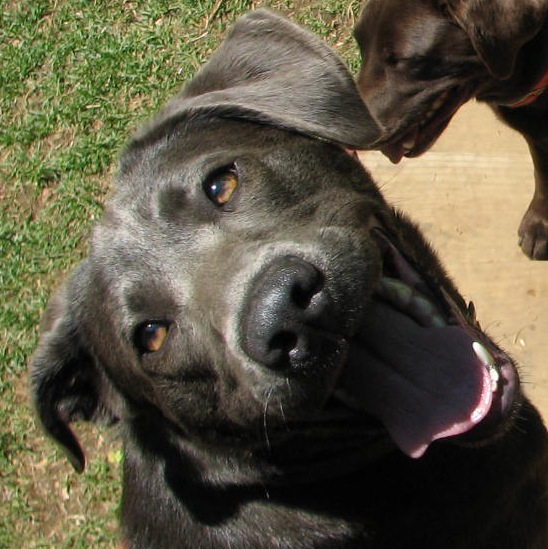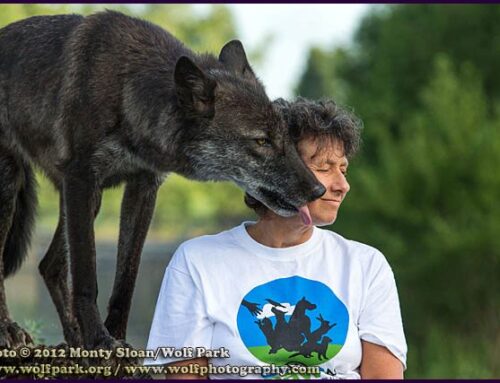 In my P.E.T. (play, exercise, training) triad for working with fearful dogs, training is not third on the list because it is any less important than play and exercise. But I think that it shouldn’t necessarily be the primary focus when working with a dog, especially a new, fearful one. Besides the fact that E.P.T or T.E.P don’t have the same ring to them, I try to focus on discovering what kinds of playful behaviors dogs engage in because even the most dog friendly training, using the least aversive techniques available can still put too much pressure on a dog. I’ve seen plenty of non-fearful dogs in stressful situations tune-out their owners who are trying to teach them new behaviors or get them to perform those already acquired. Fearful dogs are often always experiencing too much stress.
In my P.E.T. (play, exercise, training) triad for working with fearful dogs, training is not third on the list because it is any less important than play and exercise. But I think that it shouldn’t necessarily be the primary focus when working with a dog, especially a new, fearful one. Besides the fact that E.P.T or T.E.P don’t have the same ring to them, I try to focus on discovering what kinds of playful behaviors dogs engage in because even the most dog friendly training, using the least aversive techniques available can still put too much pressure on a dog. I’ve seen plenty of non-fearful dogs in stressful situations tune-out their owners who are trying to teach them new behaviors or get them to perform those already acquired. Fearful dogs are often always experiencing too much stress.
Two reasons for putting play first on the list are:
1. Fear manifests in both the brain and body. A fearful dog often moves stiffly and in a stilted manner. Their breathing is shallow and rapid. Their brain and body have become very good at ‘being scared’. Play provides them the opportunity to experience positive feelings and move more fluidly and loosely, breathe more deeply, get their brains and bodies better at feeling good.
2. Play, often more than food, can be highly motivating and rewarding to a dog. When we as handlers control or can moderate rewards we are more likely to get and keep the dog’s attention and benefit from the association.
But training is important as well. It stands to reason that if dogs are learning all the time, and I believe they are, then we are training all the time. Most of the time we’re just not aware of what it is we’re training! When I talk about ‘training’ I am referring to the process of teaching particular behaviors to be performed on cue. Behaviors and cues that we have decided upon. Training a fearful dog is like handing them a dictionary with which to understand the language of the humans around them.
It is helpful to teach a dog a neutral behavior which they perform in a variety of situations. Standing and waiting could be one of them. However few people appreciate a dog’s ability to just stand there, whereas a dog that plops down into a sit gains 30 IQ points in their eyes. Get the dog to raise a front paw and they’re a veritable genius. This doesn’t matter for most owned dogs, they certainly don’t care how smart people perceive them to be, but shelter dogs and foster dogs that are ‘on the market’ can benefit from it. It is also beneficial for a fearful dog to have a behavior which they can perform which predicts nothing negative or scary. Many dogs do not enjoy being patted on the head or leaned over so when teaching a fearful or shy dog to sit calmly around people, be sure to control the people they come in contact with until the dog is able to enjoy being interacted with in this way.
Teaching a dog to sit when they meet people is sort of like smiling when you’re traveling somewhere you don’t speak the language. It’s a default behavior that makes others feel more comfortable with you and when you don’t really understand what is being said, is not likely to get you into trouble (though women traveling on their own should use discretion when employing this technique!).





